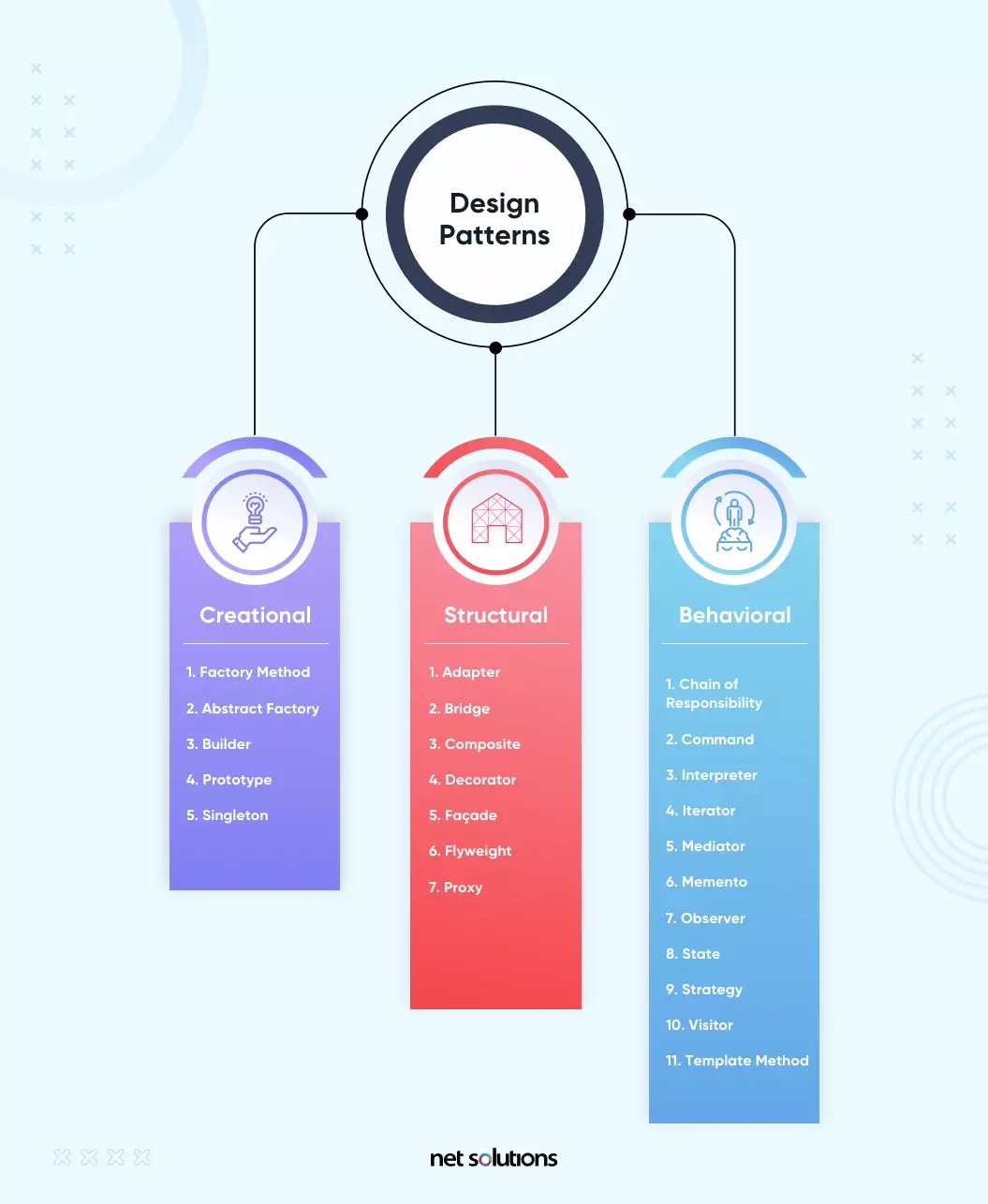Blueprints for Success: Decoding Design Patterns in Software Development
05 Dec 2024Imagine building a house. Without blueprints, you’d be left improvising each room, probably ending up with a structurally unsound mess. Software development faces a similar dilemma. How do you create systems that are reliable, scalable, and maintainable without reinventing the wheel each time? Enter design patterns: the blueprints of programming.
The Architect’s Secret: What Are Design Patterns?
Design patterns are tried-and-true solutions to common problems in software design. Think of them as recipes in a cookbook. Each recipe outlines the ingredients (components) and the steps (relationships and processes) needed to solve a specific problem. Unlike rigid rules, these patterns are templates, adaptable to different contexts.
First introduced by the “Gang of Four” (Erich Gamma, Richard Helm, Ralph Johnson, and John Vlissides) in their seminal book Design Patterns: Elements of Reusable Object-Oriented Software, these patterns are organized into three broad categories:
- Creational Patterns: How do you create objects without tightly coupling your code? Examples like the Singleton and Factory patterns tackle this question.
- Structural Patterns: How do you compose objects to form larger structures? Patterns like Adapter and Decorator answer this.
- Behavioral Patterns: How do objects interact and communicate? Observer and Strategy are among the answers.
 Source: https://www.netsolutions.com/insights/software-design-pattern/
Source: https://www.netsolutions.com/insights/software-design-pattern/
Building My Own Systems: How I’ve Used Design Patterns
During the final project, I worked with my team to create a recipe website for college students, where I had to take on the role of being a software architect. The website needed to cater to students with varying levels of cooking expertise and dietary preferences. As I navigated these challenges, design patterns became my trusted toolbox.
The Strategy pattern came to the rescue when handling recipe recommendations. Each user could input preferences such as “vegetarian,” “vegan,” or “gluten free.” I worked with my team and implemented interchangeable algorithms for these filters, allowing the recommendation engine to switch between them dynamically. This pattern ensured the system was flexible and extensible, as new filters like “high-protein” could be added effortlessly later.
For displaying recipes, we found ourselves relying on the Decorator pattern. Each recipe needed to support optional, customizable filters such as appliance type (e.g., microwave, oven), specific ingredients, estimated cost per serving, and prep times. By wrapping core recipe objects with decorators, we created a modular system where these filters could be added or removed dynamically. For example, a user searching for “microwave recipes under $5” would see results tailored specifically to those criteria. This approach eliminated the need to create separate objects for every possible combination of features, making the system flexible and easy to maintain.
Why Patterns Matter
Design patterns do more than solve problems; they empower developers to think systematically. By giving common problems a name and a structured solution, patterns provide a shared language among developers. Saying “Decorator” or “Strategy” communicates intent far more effectively than a paragraph-long explanation.
Closing the Blueprints
Learning and using design patterns is like perfecting a culinary skill. At first, it feels overwhelming to learn all the techniques, but with practice, they become second nature. They allow you to focus on crafting elegant solutions rather than struggling with the basics.
For my team’s recipe website, design patterns elevated the project from a simple collection of features to a polished, scalable system. As I continue to refine my skills, I’m constantly amazed at how these blueprints streamline the creative process.